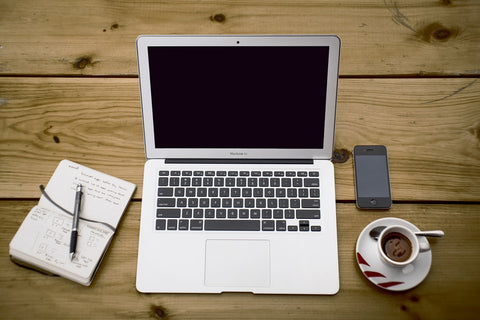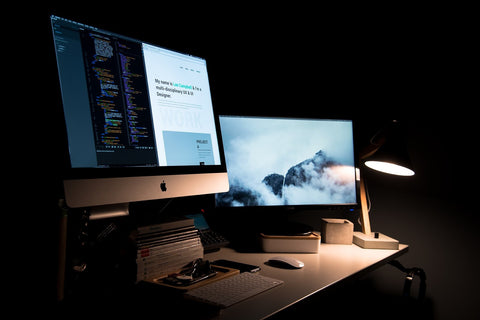How To Light Your Home Office For Maximum Productivity February 15, 2017 00:00

Whether you are getting a bit of work done from home over the weekend or your job lets you work remotely every day of the week, when your workplace is in your own home it seems like simply staying focused on the task at hand is a challenge.
That’s why when it comes to boosting productivity from your home workspace, you need to take all the help you can get. You’ve already got down the basics; noise cancelling headphones, putting your cell on silent, and physically separating yourself from distractions (e.g. television, family members, pets, etc.) are all great ways to keep yourself focused. But there are a few other powerful ways of boosting your productivity that many people don’t even think of.
And they’re all capable thanks to, you guessed it, smart lighting.
Harness the energy of Blue Light
When it comes down to deciding on how to light your workspace to bring out your most productive side, the answer is clear: use cool, blue light. No matter if you’ve read up on the stimulating effects of this particular hue from previous posts, have heard about the numerous studies out there backing up its energizing properties (better than a cup of coffee according to some), or have just felt the effects for yourself, there’s no question that blue lighting may have a hand in helping you reach your full productive potential.
The secret lies in the fact that blue light is the type of lighting that most closely resembles natural daylight. Since a range of our bodies’ natural processes (like the production of the sleep chemical “melatonin”) are tied directly to our exposure to natural light, basking in a cool blue glow while working will stop your body from going into sleep mode. That’ll give you the energy you need to get even more work done.
And since most smart lighting gives you the ability to choose from over 16 million different colors on a whim, you’ll have direct access to this productivity hack whenever you want!

But don’t over-blue it!
Although, just because you can bio-hack your body into thinking it’s daytime well past sunset doesn’t mean you should. As a multitude of recent studies have shown, exposure to blue light in particular is more disruptive to your body’s sleep patterns than any other color (which is why it’s so helpful in keeping you productive!).
That’s why many offices around the world are investing in transitional color lights. They start off by producing cool, energizing blue light in the morning and gradually change to a warmer yellow light as it gets closer to quitting time. Such a transition will not only help workers get a better night sleep, it’ll also help ease them out of the working mindset, letting them better enjoy their time at home.
If you own high-quality smart bulbs, you can reap these same benefits by setting an 8-hour transition from cool colored light to warmer tones. And all it takes a new light bulb!

True brightness control
So, now that you’ve found out how to optimally control your lighting color to create a truly productive home workspace, there’s only one factor left: brightness. While it may be natural to assume that a brighter light means higher productivity, the truth is we may already be getting too much light in the workplace as it is.
In addition to the fact that lighting which is too bright can cause fluctuations in your mood, resulting in irritability and discomfort, there are some unwanted physical effects as well such as headaches and eye fatigue. If the lighting is too dim though, you may be lured into taking a midday nap. Never a good idea with a long to-do list!
The trick is getting your lighting just right. That could mean picking out a bulb that has the perfect brightness output but then again, not every activity has the same lighting requirements. For instance, reading physical documents or writing a letter will require a certain level of brightness in your home office while creating a table in Excel or doing research on the internet means you won’t need near as much light.
The solution? Lighting that allows you to change the brightness levels to cater to your activities. And smart lighting is just the ticket. In fact, many smart bulbs give you the option of saving lighting settings, letting you quickly pick out the atmosphere that’ll fit the task at hand. It doesn’t get much more convenient than that!
Let us know what you think!
How else do you use smart lighting to help you cross things off your to-do list? Do you have any other tips for boosting productivity at home using smart bulbs? Let us know in the comment section below and get productive with the Flux Smart product line!
